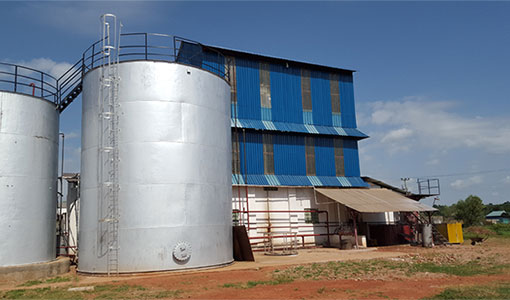Shea butter = karite butter. Various names represent the same raw material extracted from the shea tree from Africa.
How is Shea butter produced? Traditionally, Shea Butter was extracted by people who picked the nuts, cracked them, grilled them and pounded them. They were boiled in water for hours until the Shea Butter rose to the surface. It was then scooped into gourds and left to cool and set. Shea Butter is solid at room temperature although it quickly liquefies right around body temperature.
This Shea Butter is called unrefined Shea Butter or raw Shea Butter. Since Shea Butter is an all natural product, it can vary widely in quality, appearance and smell depending on where it is produced from and how it is refined or extracted.


What makes a difference between West and East African shea butter? There are two known types of shea butter: Vitellaria Nilotica which is native to East Africa and Vitellaria Paradox (or Butyrospermum parkii) native to West Africa.
Shea butter Nilotica has a higher content of oleic acid (olein) which contains most of beneficial substances generally attributed to shea butter. In comparison with its West African obverse Nilotica is softer and more intensely fragrant.
Where does the shea tree grow?
Organic Shea Butter Nilotica is rarer and very hard to find. It dissolves at body temperature, which makes it easily and quickly absorbed by skin and hair. It also has better moisturizing abilities. Shea Butter Nilotica is excellent for dry skin of knees, elbows or hands. It is especially good for eczema, sunburn and as lip balm. Shea tree, which grows in Uganda, is genetically unique, as demonstrated by the French institute CIRAD study of the period from 1998 to 2003.

Shea Butter
Shea butter = karite butter. Various names represent the same raw material extracted from the shea tree from Africa.
How is Shea butter produced? Traditionally, Shea Butter was extracted by people who picked the nuts, cracked them, grilled them and pounded them. They were boiled in water for hours until the Shea Butter rose to the surface. It was then scooped into gourds and left to cool and set. Shea Butter is solid at room temperature although it quickly liquefies right around body temperature. This Shea Butter is called unrefined Shea Butter or raw Shea Butter. Since Shea Butter is an all natural product, it can vary widely in quality, appearance and smell depending on where it is produced from and how it is refined or extracted.
What makes a difference between West and East African shea butter? There are two known types of shea butter: Vitellaria Nilotica which is native to East Africa and Vitellaria Paradox (or Butyrospermum parkii) native to West Africa. Shea butter Nilotica has a higher content of oleic acid (olein) which contains most of beneficial substances generally attributed to shea butter. In comparison with its West African obverse Nilotica is softer and more intensely fragrant. It dissolves at body temperature, which makes it easily and quickly absorbed by skin and hair. It also has better moisturizing abilities.


Where does the Shea Tree grow?
Organic Shea Butter Nilotica is rarer and very hard to find. It has extremely good moisturizing properties, so it is excellent for dry skin of knees, elbows or hands. It is especially good for eczema, sunburn and as lip balm. Shea tree, which grows in Uganda, is genetically unique, as demonstrated by the French institute CIRAD study of the period from 1998 to 2003.

